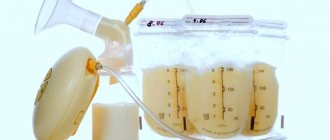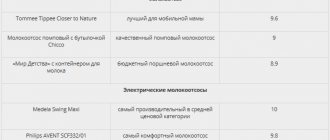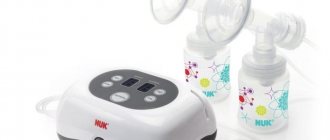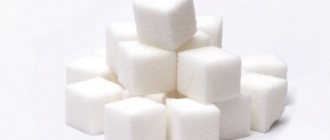What is the best way to store expressed milk? Many ways are offered to young mothers for preserving this “magic elixir”: glass bottles and jars, plastic containers, sterile test jars from the pharmacy, bags for storing breast milk.
The last method is the most convenient. They come in both disposable and reusable versions. It is easier to use disposable packages because of the confidence in their sterility. This storage method has many advantages.
Methods for expressing milk for storage
Let's look at 2 main methods for preserving the baby's natural nutrition.
Breast pump
When using this method, the convenience lies in the presence of a special mount for the package. After expressing, the packaging device is easily detached and sealed tightly.
Manual expression
In this way, an experienced mother can express every drop of milk without the help of special devices in any convenient place.
For a baby, mother's milk contains everything necessary for development and its first immunity from possible diseases, and also on the skin of the breast around the nipple there are beneficial bacteria that populate its intestines and form the microflora. Therefore, before expressing, you should not specifically wash your breasts; just wash your hands well. Before using the breast pump, check that all parts are clean and dry.
Choosing a storage container
On the shelves of baby stores you can see many devices for expressing and storing breast milk. Young mothers are often lost and don’t know what to choose.
- Experts have different opinions about storing milk in glass containers. On the one hand, such containers are considered the safest. The glass of the baby bottle does not release toxic substances into the product. On the other hand, during the process of cooling and heating, a woman may experience the bottle bursting. Therefore, it is important to consider what temperature limits the manufacturer sets for the selected model.
- Transparent plastic containers are very popular. They have a wide neck and a convenient screw cap. However, such systems take up a lot of space in the freezer. Also, some manufacturers use low-quality material to make the container. Therefore, plastic for freezing breast milk is a double-edged sword.
- Bags made from highly environmentally friendly material are considered the best option. They do not contain bisphenol A and are completely ready for milk collection. The bags are disposable and sterile, do not take up much space and do not require transfusion of the product before heating.
It is unacceptable to freeze milk in a plastic bag, plastic container for storing bulk products or plastic water bottles.
How to freeze breast milk?
Those who know that you can freeze breast milk are wondering how to do it correctly. First, a few tips:
- The bag should not be filled to the very top so that it does not get damaged when frozen, because... frozen liquid tends to expand.
- There is no need to mix frozen milk with freshly expressed or cooled milk. It is best if you want to add expressed milk to already cooled milk - first cool it separately, and then mix it with the previously cooled milk. And after that, freeze everything together.
- It is better to immediately put the freezing date on the bags: this is mandatory if you care about the health of the baby.
Now let's look at how to properly freeze breast milk:
Once expressed, it should be packaged in a sterile bag and, first, placed in the general compartment of the refrigerator. The product must cool slightly, and only after that it is transferred to the freezer. Frozen milk almost does not lose its beneficial properties, and is better suited for a newborn than the most expensive and best formula.
Freezer storage containers
Manufacturers of products for comfortable motherhood offer various options for storing food in the freezer. The choice depends on storage conditions. For example, special bags for freezing milk are convenient because they are easy to mark with the date of collection and freezing, save space in the chamber, and are sterile. Moreover, the bags are even attached to the breast pump, which reduces the bacterial “contamination” of the product.
You can freeze milk in special containers that can withstand temperature changes without compromising quality. They fit ergonomically into the freezer, are made of plastic, which when heated does not emit harmful impurities, is convenient to wash and use for a long time. But under natural conditions it is difficult to achieve sterility and milk will also need to be transfused for feeding.
Bottles, glass or made of special plastic, will require additional sterilization. But they can also be attached to a breast pump, which is quite convenient. Secure lids allow you to store them in the freezer in any position, but still take up more space compared to bags. A big plus: warmed up, put on a pacifier - and you can feed.
You can use regular jars suitable for use at low and medium temperatures. Among the minuses, let's mention the dubiousness of the material from which they are made. Therefore, it is always better to choose glass. They will take up a lot of space in the freezer and will require pouring milk into a bottle. But jars are available, cheap, easy to wash and reuse.
Proper thawing before feeding
You cannot use a microwave oven for defrosting - the milk will lose almost all its beneficial properties. It should defrost gradually. It is better to take care of this in advance, and not immediately before feeding the baby. First, the milk is transferred from the freezer to the main compartment of the refrigerator, then, once thawed, it is heated in a water bath (no more than 40 degrees). Or, gradually heat the package with the frozen product in a container with warm water, periodically changing the cooled water to warm. Another way is to use a bottle warmer.
When defrosting, you should mix the contents of the package evenly so that the beneficial elements of the milk do not settle on the walls of the package.
Thawed milk is poured into a bottle and heated in the usual way.
Can breast milk be re-frozen? Answer: no. Any remaining defrosted milk can no longer be used. The package also cannot be used for freezing again. Therefore, it is better to fill the bags in portions for one full feeding.
Why freeze it?
Most mothers choose to stay with their baby and breastfeed breastfeeding. But there are situations in life that force women to be separated from their children:
- going to work;
- business trip;
- departure of a student for a session;
- having to go to hospital with another child;
- illness of the mother, requiring temporary cessation of breastfeeding due to medications, etc.
Close people will help with care and supervision, but what about feeding the child? Freezing breast milk for the entire period of mother’s absence will be a salvation. Do not switch temporarily to formula, depriving the child of the best. So you may not return to breastfeeding.
Some mothers, due to a lack of information, are wary of defrosted food. And in vain.
Studies have shown that frozen breast milk retains almost all of its beneficial properties. After defrosting, the main indicators decrease slightly: lactose, fat, calorie and nitrogen content, and enzyme activity returns. Vitamins and microelements remain largely intact.
The nutritional value of natural baby food remains almost at the same level, allowing you to fully feed and raise a child even in the first six months of life. The limitation, perhaps, exists only in relation to premature infants with low birth weight. Doctors do not recommend separating mothers and freezing milk until they reach normal weight and health levels for their age.
But the main task is to freeze breast milk in compliance with the necessary requirements, starting from pumping and ending with defrosting. If the process is disrupted, there is no guarantee that the nutrition will remain complete.
How to properly use thawed breast milk
When the milk is thawed, it should be properly prepared for feeding the baby. The following tips can help a young mother:
- To heat milk, you need to place the container in which it was frozen in a pan with warm water or place it under tap water. If you have a special bottle warmer, you can resort to using it. You should not use too hot water or a microwave oven for heating, as there is a high risk of milk overheating and loss of its beneficial qualities.
- Over time, breast milk has the ability to separate: the fatty contents rise to the surface, and the rest remains below. In order for it to regain a homogeneous structure, you need to carefully turn the container upside down, and then the layers will mix.
- Always check the temperature of the milk before giving it to your baby. To do this, you can use a thermometer or drop a little milk on your wrist and make sure it is not hot. The most suitable temperature for feeding a baby is 36–37 degrees. The closer the temperature of the product is to body temperature, the better it will be absorbed by the body, and the baby will be comfortable drinking it.
Please note that the taste of the milk changes slightly after defrosting, which may not be to the liking of some children. However, this does not mean that it is bad. Still, be careful! If there is a very sour smell, then the product is probably not suitable for feeding and it is better to throw it away.
Does freezing affect the quality and nutritional value of milk?
Freezing and subsequent heating of breast milk does not have a negative effect on its composition if all manipulations were carried out correctly. Sometimes women note that after defrosting, baby food slightly changes taste, smell and consistency. However, this does not mean that it has deteriorated. It is important to follow the established rules when expressing, sterilize containers for collecting milk and store the product in accordance with the established deadlines.
Rules to remember!
- It is unacceptable to boil milk or defrost it at room temperature.
- Do not heat the product in a microwave or oven.
- After defrosting, the milk must be consumed within 24 hours. If you keep the bottle in the room, this period is reduced to two hours.
Mother's milk can provide the baby with all the necessary nutrients. Sometimes women think that it is much healthier to give their baby formula than thawed milk. This opinion is erroneous, since even a thawed product has more benefits than artificial feeding.











